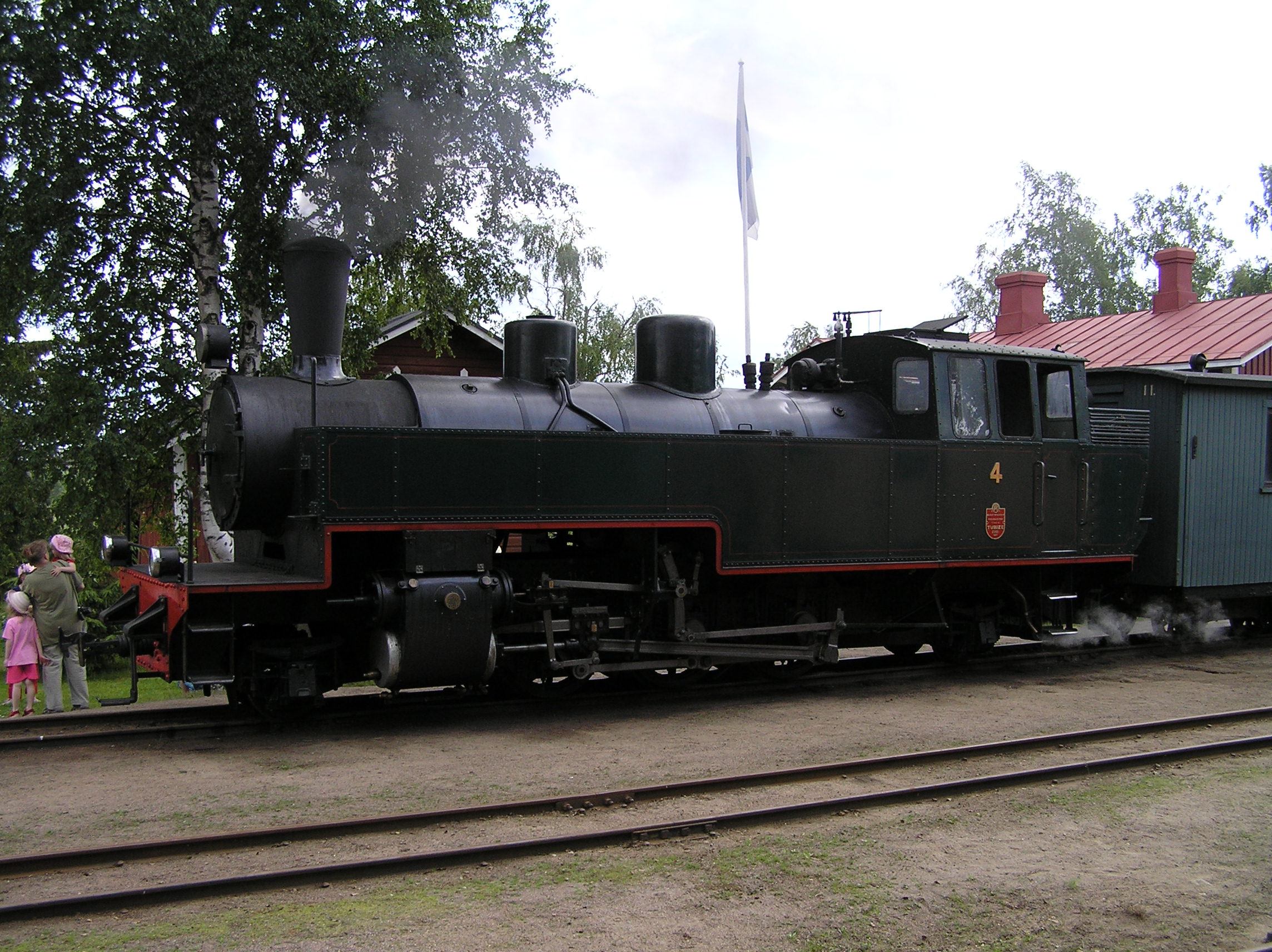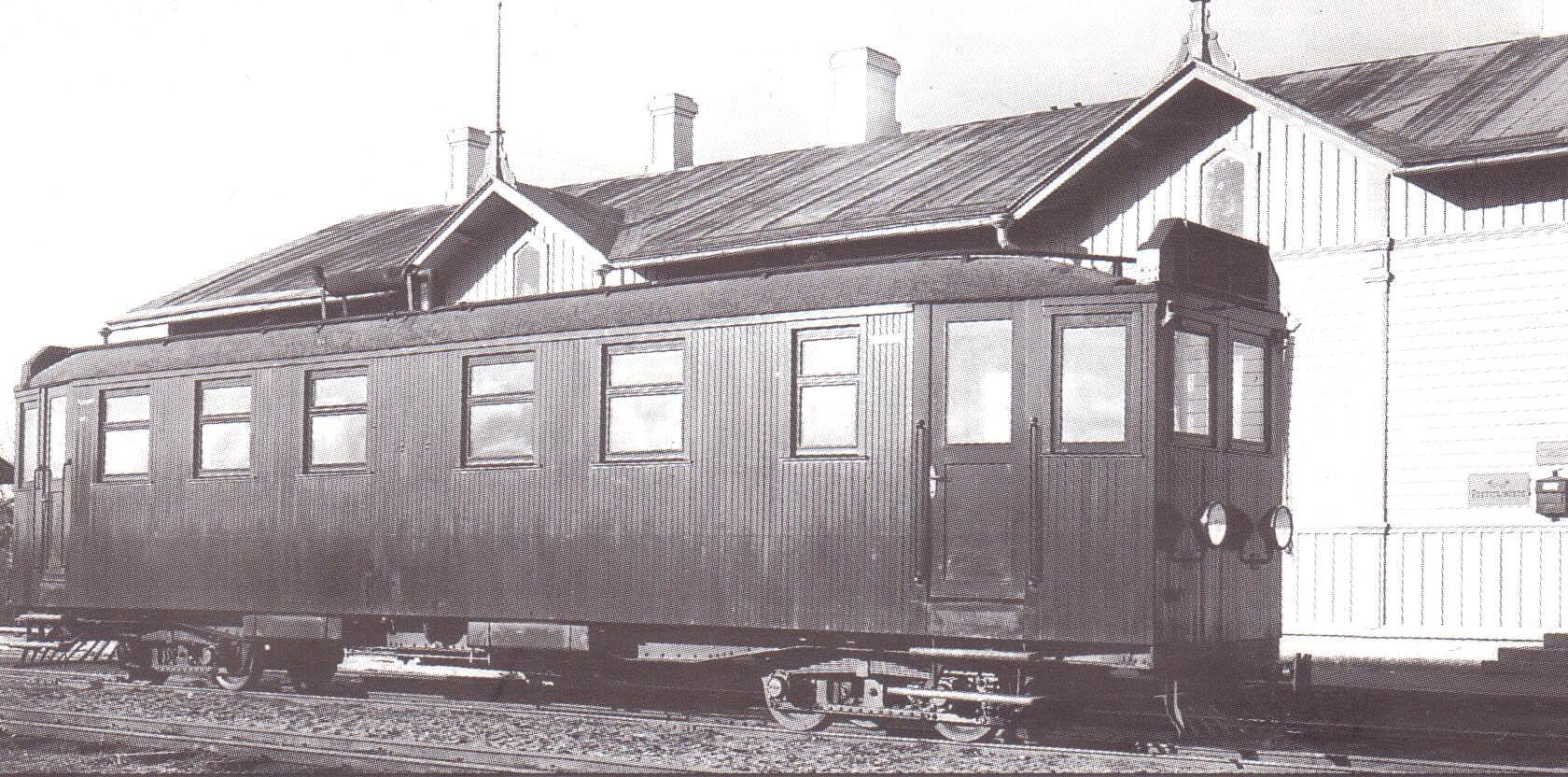Jokioinen Railway on:
[Wikipedia]
[Google]
[Amazon]
 The Jokioinen Railway () was a gauge railway running from the
The Jokioinen Railway () was a gauge railway running from the
 Beginning in the 1930s, all passenger traffic on the Jokioinen Railway was carried in
Beginning in the 1930s, all passenger traffic on the Jokioinen Railway was carried in
 The Jokioinen Railway () was a gauge railway running from the
The Jokioinen Railway () was a gauge railway running from the Finnish State Railways
VR-Group Plc (, ), commonly known as VR, is a government-owned railway company in Finland. VR's most important function is the operation of Finland's passenger rail services with 250 long-distance and 800 commuter rail services every day. With ...
station at Humppila
Humppila is a municipalities of Finland, municipality of Finland. It is located in the Tavastia Proper regions of Finland, region. The municipality has a population of (), which make it the smallest municipality in Tavastia Proper in terms of ...
via Jokioinen
Jokioinen () is a municipalities of Finland, municipality of Finland.
It is located in the Tavastia Proper regions of Finland, region. The municipality has a population of () and covers an area of of which is water. The population density is . ...
to Forssa
Forssa is a Cities of Finland, town and municipalities of Finland, municipality of Finland. It is located almost in the centre of a triangle defined by the three largest major cities in Finland (Helsinki, Turku and Tampere), in the Tavastia Prop ...
. Part of the line is now the Jokioinen Museum Railway
The Jokioinen Museum Railway () is a heritage railway running between Jokioinen and Humppila in Finland. It is located on part of the route of the last commercially operating narrow gauge railway, narrow gauge railway in Finland, the gauge Jokio ...
.
The line opened for temporary traffic on December 9, 1898. On October 25 1899, the railway began permanent passenger and freight services. It was the second privately owned narrow gauge railway
A narrow-gauge railway (narrow-gauge railroad in the US) is a railway with a track gauge (distance between the rails) narrower than . Most narrow-gauge railways are between and .
Since narrow-gauge railways are usually built with Minimum railw ...
opened for common carrier services in Finland
Finland, officially the Republic of Finland, is a Nordic country in Northern Europe. It borders Sweden to the northwest, Norway to the north, and Russia to the east, with the Gulf of Bothnia to the west and the Gulf of Finland to the south, ...
. In Forssa an electric railway of Forssa Oy connected with the Jokioinen Railway.
Motive power
The original motive power of the Jokioinen Railway was two American tank steam locomotives (Nos. 1 and 2) which were built in 1897 by H. K. Porter in Pittsburgh, Pennsylvania. These locomotives were in operation for over 50 years until 1948. In 1900, the Railway bought another American steam locomotive from theBaldwin Locomotive Works
The Baldwin Locomotive Works (BLW) was an American manufacturer of railway locomotives from 1825 to 1951. Originally located in Philadelphia, Pennsylvania, it moved to nearby Eddystone, Pennsylvania, Eddystone in the early 20th century. The com ...
, and it was given number 3. This locomotive was soon found to be too heavy for the light 17 kg/m rails of the railway, and it was sold to Estonia
Estonia, officially the Republic of Estonia, is a country in Northern Europe. It is bordered to the north by the Gulf of Finland across from Finland, to the west by the Baltic Sea across from Sweden, to the south by Latvia, and to the east by Ru ...
. In 1922 the railway purchased a small tank locomotive
A tank locomotive is a steam locomotive which carries its water in one or more on-board water tanks, instead of a more traditional tender (rail), tender. Most tank engines also have Fuel bunker, bunkers (or fuel tanks) to hold fuel; in a #Tender ...
built by Lokomo in Tampere
Tampere is a city in Finland and the regional capital of Pirkanmaa. It is located in the Finnish Lakeland. The population of Tampere is approximately , while the metropolitan area has a population of approximately . It is the most populous mu ...
, Finland and in 1937 it bought a large tank locomotive built by Henschel
Henschel & Son () was a German company, located in Kassel, best known during the 20th century as a maker of transportation equipment, including locomotives, trucks, buses and trolleybuses, and armoured fighting vehicles and weapons.
Georg C ...
in Kassel
Kassel (; in Germany, spelled Cassel until 1926) is a city on the Fulda River in North Hesse, northern Hesse, in Central Germany (geography), central Germany. It is the administrative seat of the Regierungsbezirk Kassel (region), Kassel and the d ...
, Germany. This locomotive had to be given to the Soviet Union
The Union of Soviet Socialist Republics. (USSR), commonly known as the Soviet Union, was a List of former transcontinental countries#Since 1700, transcontinental country that spanned much of Eurasia from 1922 until Dissolution of the Soviet ...
as a penalty fee for late war reparation payments in 1945. To replace the Henschel lost to the Soviet Union, the railway ordered two new locomotives from Ateliers de Tubize in Belgium
Belgium, officially the Kingdom of Belgium, is a country in Northwestern Europe. Situated in a coastal lowland region known as the Low Countries, it is bordered by the Netherlands to the north, Germany to the east, Luxembourg to the southeas ...
. These locomotives were delivered in 1947 and 1948 and given numbers 4 and 5.
During the 1950s and 1960s, the last years of the railway, trains were powered by a roster of four diesel locomotives
A diesel locomotive is a type of railway locomotive in which the prime mover (locomotive), power source is a diesel engine. Several types of diesel locomotives have been developed, differing mainly in the means by which mechanical power is con ...
. These locomotives were Move 21 models, manufactured by Valmet
Valmet Oyj, a Finnish company, is a developer and supplier of process technologies, automation systems and services for the pulp, paper, energy industries. Flow control serves a wider base of process industries.
History 1999–2012 Valmet ...
Airplane factory in Tampere, Finland. Originally, this type of locomotive was meant as a war payment to Soviet Union.
Passenger traffic
 Beginning in the 1930s, all passenger traffic on the Jokioinen Railway was carried in
Beginning in the 1930s, all passenger traffic on the Jokioinen Railway was carried in railcar
A railcar (not to be confused with the generic term railroad car or railway car) is a self-propelled railway vehicle designed to transport passengers. The term "railcar" is usually used in reference to a train consisting of a single coa ...
s. Two railcars ran on the Jokioinen Railway. The first railcar ran from 1930 to 1932 and the second ran from 1932 to 1942.
The railway had three passenger coaches. These coaches were built by Hietalahti Shipyard in Helsinki
Helsinki () is the Capital city, capital and most populous List of cities and towns in Finland, city in Finland. It is on the shore of the Gulf of Finland and is the seat of southern Finland's Uusimaa region. About people live in the municipali ...
on top of frames and trucks manufactured by Leeds Forge Company
The Leeds Forge Company manufactured corrugated furnaces for marine steam engine boilers and pressed steel railway rolling stock.
Early history
The company was founded by Samson Fox, who was born in 1838 in Bradford, Yorkshire. Samson apprent ...
in England
England is a Countries of the United Kingdom, country that is part of the United Kingdom. It is located on the island of Great Britain, of which it covers about 62%, and List of islands of England, more than 100 smaller adjacent islands. It ...
.
Freight traffic
The Jokioinen Railway had a total of about one hundredfreight car
Goods wagons or freight wagons (North America: freight cars), also known as goods carriages, goods trucks, freight carriages or freight trucks, are unpowered railway vehicles that are used for the transportation of cargo. A variety of wagon types ...
s. Most of these were manufactured at the end of the 1800s in England and Finland and were in use throughout the time the railway operated, from 1898 to 1974. In 1960 more freight cars were bought from the when it was re-gauged to broad gauge
Freight was the principal traffic on the railway from the very beginning until its closure. Originally the railway was built to serve the needs of the expanding industries in Jokioinen and Forssa. The best year for freight traffic was 1940, during the short peace between the Winter War
The Winter War was a war between the Soviet Union and Finland. It began with a Soviet invasion of Finland on 30 November 1939, three months after the outbreak of World War II, and ended three and a half months later with the Moscow Peac ...
and the Continuation War
The Continuation War, also known as the Second Soviet–Finnish War, was a conflict fought by Finland and Nazi Germany against the Soviet Union during World War II. It began with a Finnish declaration of war on 25 June 1941 and ended on 19 ...
, when a total of 90,000 tons of freight was carried on the Railway. The top year for passenger traffic was just after the Wars in 1945, when an annual total of 402,254 passengers was carried on the railway.
Decline
In the 1940s, the Jokioinen Railway faced growing competition from increasing road traffic. The war had slowed this competition down, but within 10 years passenger traffic had ended. The last passenger trains were withdrawn on 31 August 1954 and the railway started to use highway buses for its passenger services. Freight service continued for another 20 years. The Jokioinen Railway usedtransporter wagon
A transporter wagon, in railway terminology, is a goods wagon, wagon (International Union of Railways, UIC) or railroad car (US) designed to carry other railway equipment. Normally, it is used to transport equipment of a different rail gauge. ...
s to carry broad () gauge VR freight cars from the 1930s until the end of services on the railway. This avoided the slow and expensive transfer of freight at Humppila and allowed the Jokioinen Railway to stay competitive much longer than other narrow gauge railways in Finland.
By the end of the 1960s, however, the railway began to show signs of old age and wear. The track and the rolling stock were almost all more than 70 years old and large investments would have been needed to compete against the growing automobile and truck use, but the railway's owners were no longer willing to invest any more money in it.
The last revenue freight train of the Jokioinen Railway ran on 29 March 1974. In the same year the section of railway between Forssa and Jokioinen was torn up and in 1975 the line between Minkiö and Humppila was also lifted. The remaining section from Minkiö to Jokioinen was taken over by the Jokioinen Museum Railway
The Jokioinen Museum Railway () is a heritage railway running between Jokioinen and Humppila in Finland. It is located on part of the route of the last commercially operating narrow gauge railway, narrow gauge railway in Finland, the gauge Jokio ...
, which opened on 25 August 1978 and has since been extended by rebuilding the line from Minkiö to Humppila.
See also
Narrow-gauge railways in FinlandReferences
External links
{{commonscat-inline, Jokioinen–Forssa railway Jokioinen Railway lines in Finland Railway lines opened in 1898 750 mm gauge railways in Finland